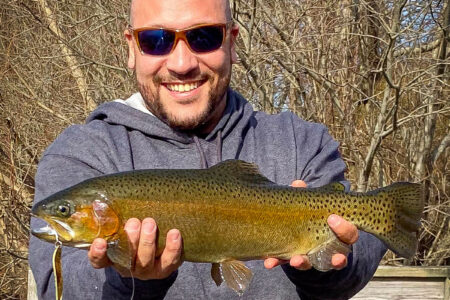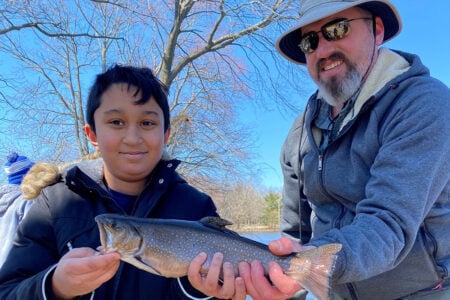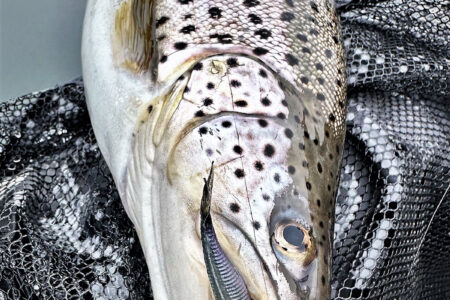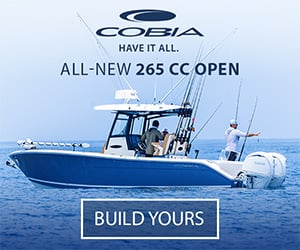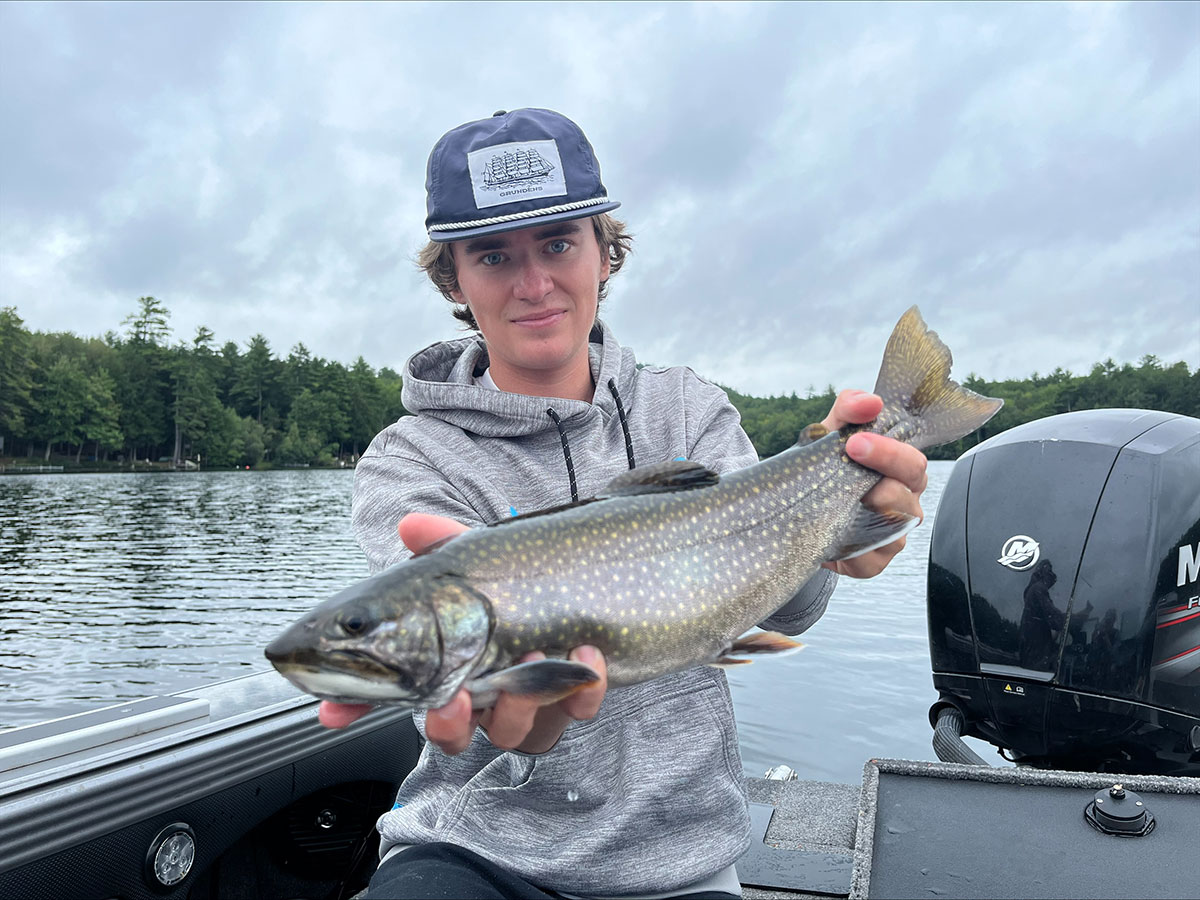
Maine’s unique species present new challenges and require some new (and old) techniques.
Moving to Maine for college was not only the largest change I’ve made in my life, but it also presented me with many new angling challenges. I had visited Maine in the past, but hadn’t fished there much, I knew that ‘Vacationland’ offered new species and opportunities to fish untouched water, but the many stepping stones leading to fishing success would be the real challenge.
I attend the University of New England, located on the Saco River where it meets the Gulf of Maine. I didn’t have access to a car my freshman year, so I mostly fished for stripers right on campus and learned quickly that they leave much sooner than they do in my home state of Connecticut! Sophomore year came with wheels and new opportunities, I have been fishing all over southern and central Maine since then and the learning curve has been incredible.
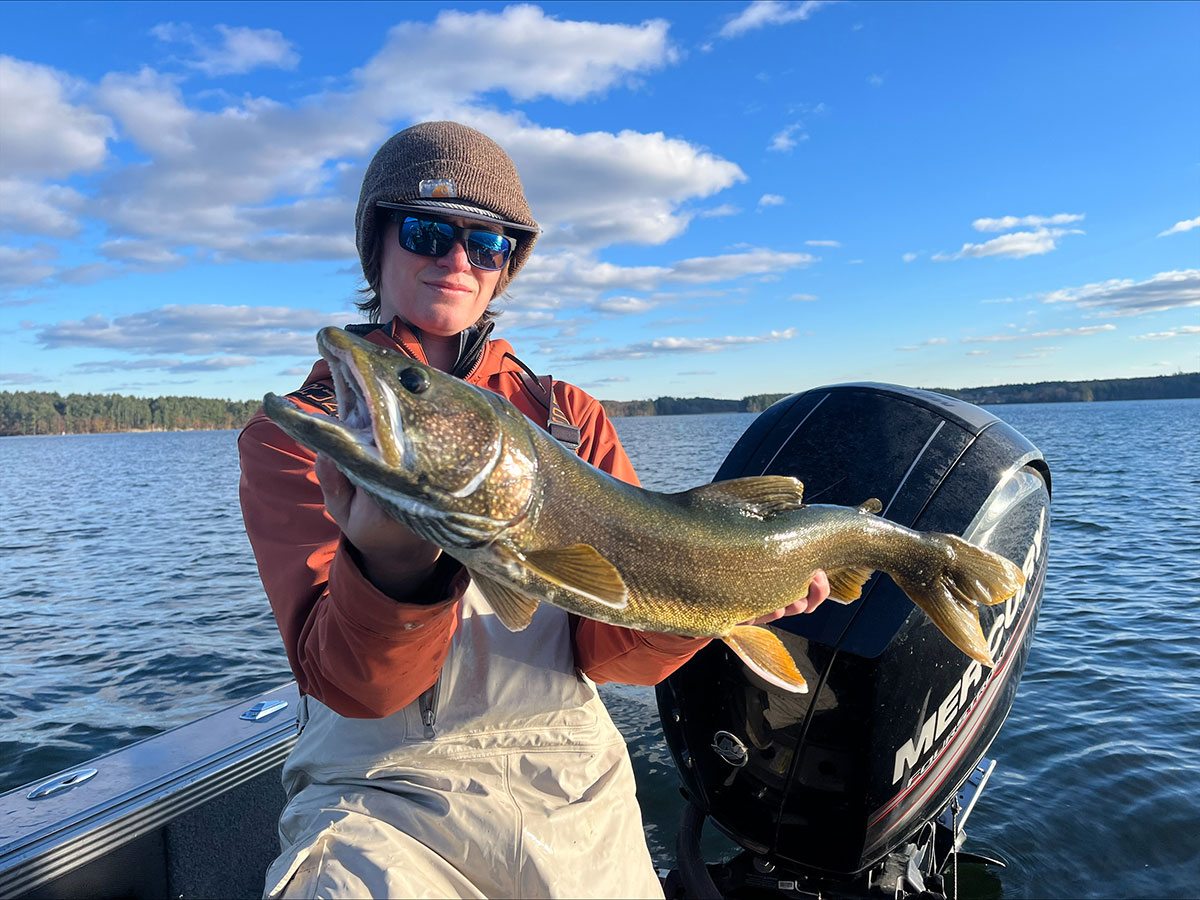
Landlocked Salmon
I came across this fishery rather recently, and while I am still learning, I have logged thousands of miles and spent hundreds of hours exploring southern Maine’s lakes for potential salmon fishing opportunities. I have fished the entirety of my fall 2023 season fishing for landlocks across dozens of bodies of water.
Landlocked Atlantic salmon are a subspecies of Atlantic salmon that do not have access to the marine environment, so they spend their entire lives in freshwater. These fish spawn in the fall, when the water temps cool down. In many salmon lakes, their primary forage is smelt, usually in the half- to 2-inch size range. However this is not their only food source, they also eat aquatic insects, other smaller fish, and eggs. These salmon, unlike their pacific cousins, do not die after they spawn; landlocks may spawn multiple times in their lifetime.
Location is everything when it comes to fishing for landlocked salmon. Stating the obvious, you must be fishing a lake that has either a wild sustaining population of salmon, or one that gets stocked with yearlings every year. The fall salmon fishing opportunities usually occur around late-September through mid-November, however I have caught fish into late-December. These fish are heading up shallow, looking for places to spawn. When looking at a salmon lake, you want to look for shallow areas with sand and rocky bottoms. Areas with current are even better, look for inlets or outlets, salmon love these areas to spawn.
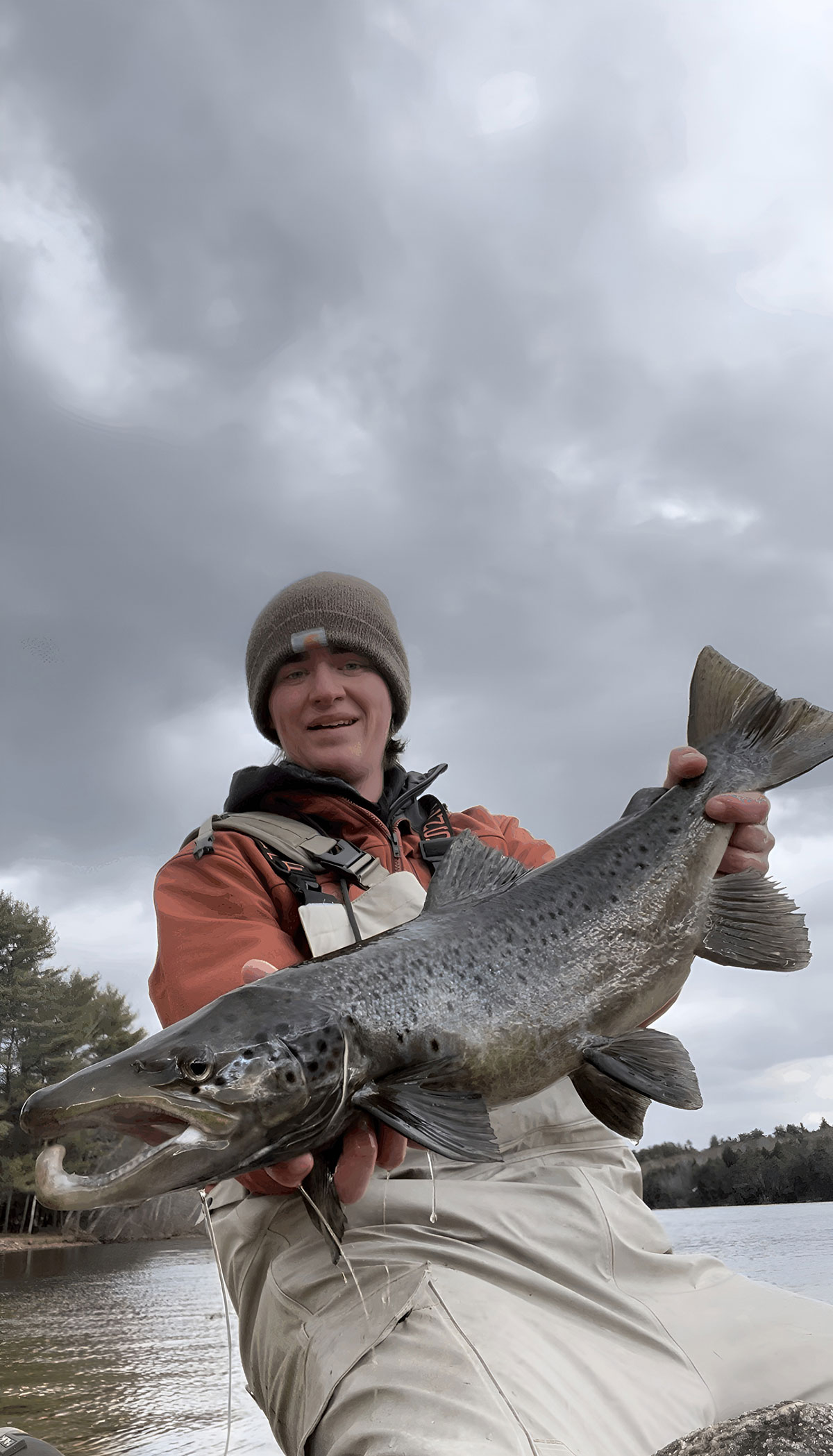
A Fly Game
Remember that in the state of Maine, rivers and tributaries to these larger lakes are closed to all types of fishing starting October 1. Along with the rivers closing, in most places there is a mandatory catch and release law, and in some places ‘fly fishing only’ (FFO) laws dictate how they can be targeted. I only use fly when targeting salmon. It’s important to know that, while these fish are in these areas to spawn, there is very little successful natural reproduction.
When I go and check out a new spot, I scan the water using polarized sunglasses, looking for signs of life. I’m looking for redds, sandy spots, current, or better yet salmon. If you arrive at a spot and see some signs of life, but no salmon, don’t be discouraged! They might not be sitting up shallow at that point in time, but can be sitting just off what you can see. I like to fish streamers in these areas, which are an effective method for catching aggressive salmon that you can’t see. If streamer fishing doesn’t produce, be persistent and keep coming back, and eventually you’re likely to find them.
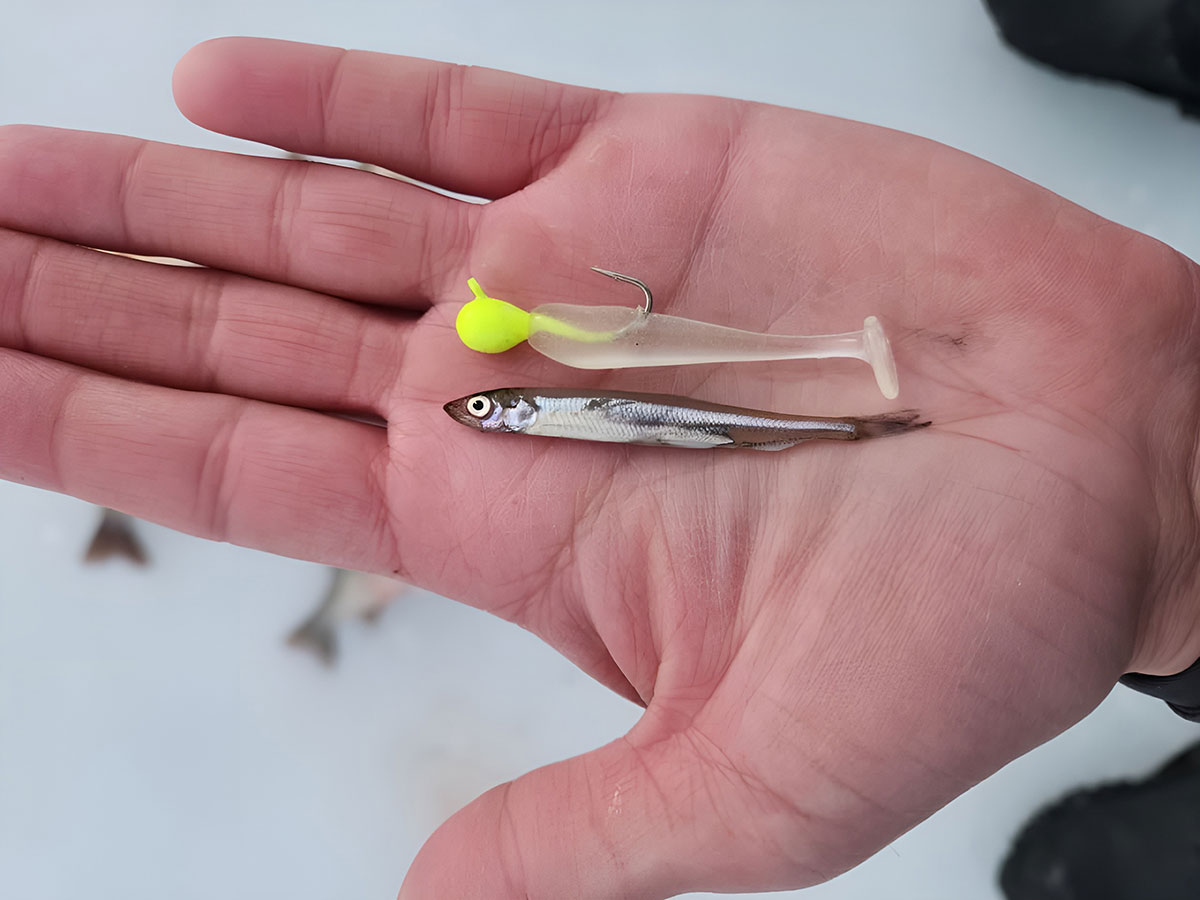
Technique & Gear
Generally the salmon will be positioned facing upcurrent or will be swimming around the area of spawning interest. I find that sight-fishing these salmon is the most effective way to catch them. I like to start by throwing streamers far above them, stripping fast and hard on the first couple of casts, then slowing down the following few. If no fish react, I switch to nymphing. I like to drift my nymphs a few feet in front of the fish, and just a few inches above their heads. I find that during the spawn they don’t want to expend too much effort to eat, so getting nymphs close to them is important. I like to use nymphs (beadheads) sizes 14 to 18, with some sort of bright color so I can easily see the fly. Some of my best flies have been Pink Frenchies, Blowtorches, and Perdigons. But you cannot rule out smaller egg patterns and squirmy worms, because they work too!
Salmon have a frustrating tendency to eat something and spit it out wicked fast, so fast you cannot set the hook. This is why it’s imperative for me to see the salmon and see my fly. The hardest part of catching a landlocked salmon is landing one. They leap a few feet in the air and shake their heads violently. Since most of the flies I use are made on barbless hooks, this is when I lose my fish. Try to keep that rod down and let the fish fight it out.
For your rod and reel, I recommend anything from a 3- to a 5-weight. I currently use two different setups, a 7-1/2-foot 3-weight Moonshine Drifter with a Cheeky Launch 325, and a TFO Pro 3 8-1/2-foot 4-weight with a Cheeky Launch 350. The 3-weight is my “fun rod” which I mostly use for nymphing, while the 4-weight is my streamer rod. Both setups are spooled with Cortland Trout Boss floating fly line, and are usually in rotation between 3x and 4x tippet. This style of fishing is a lot of fun and, if you like a challenge, you may find yourself addicted, as I have.
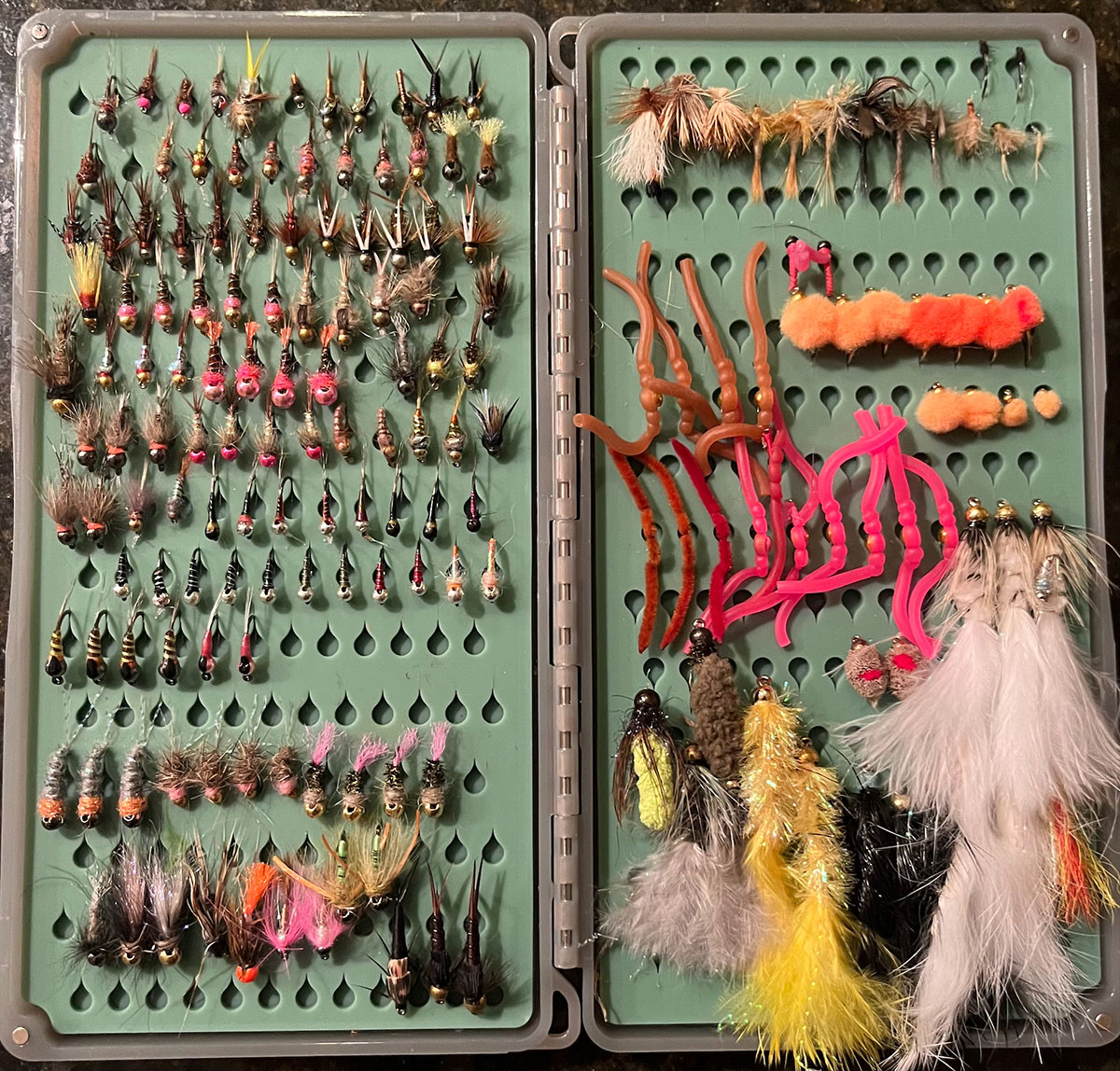
Ever Caught A Splake?
As I said, I’m mostly a shore angler when fishing in Maine, but that all changed when my buddy Ryan brought his boat up to Maine. We did some bass fishing and found good results, but our favorite target species quickly became splake. A splake is a hybrid between a lake trout and brook trout and they are notoriously finicky! They usually live in crystal clear lakes with a bounty of smelt.
When fishing for splake, you will encounter lake trout and some bass, both smallmouth and largemouth. They’re typically found in depths around 70 feet but will move up shallower when on the prowl. Lakers are often found down as deep as 100 feet. We fished for them differently than most Mainers, we didn’t troll, we used Livescope. I know what you’re thinking, “that’s cheating”. But, for splake and lakers, it’s a lot harder than you think! These fish are lightning fast, you might see one pop up on Livescope but they’ll often be long gone by the time you can get your lure down to where they were. Basically you just have to hope they stick around long enough to present to them.
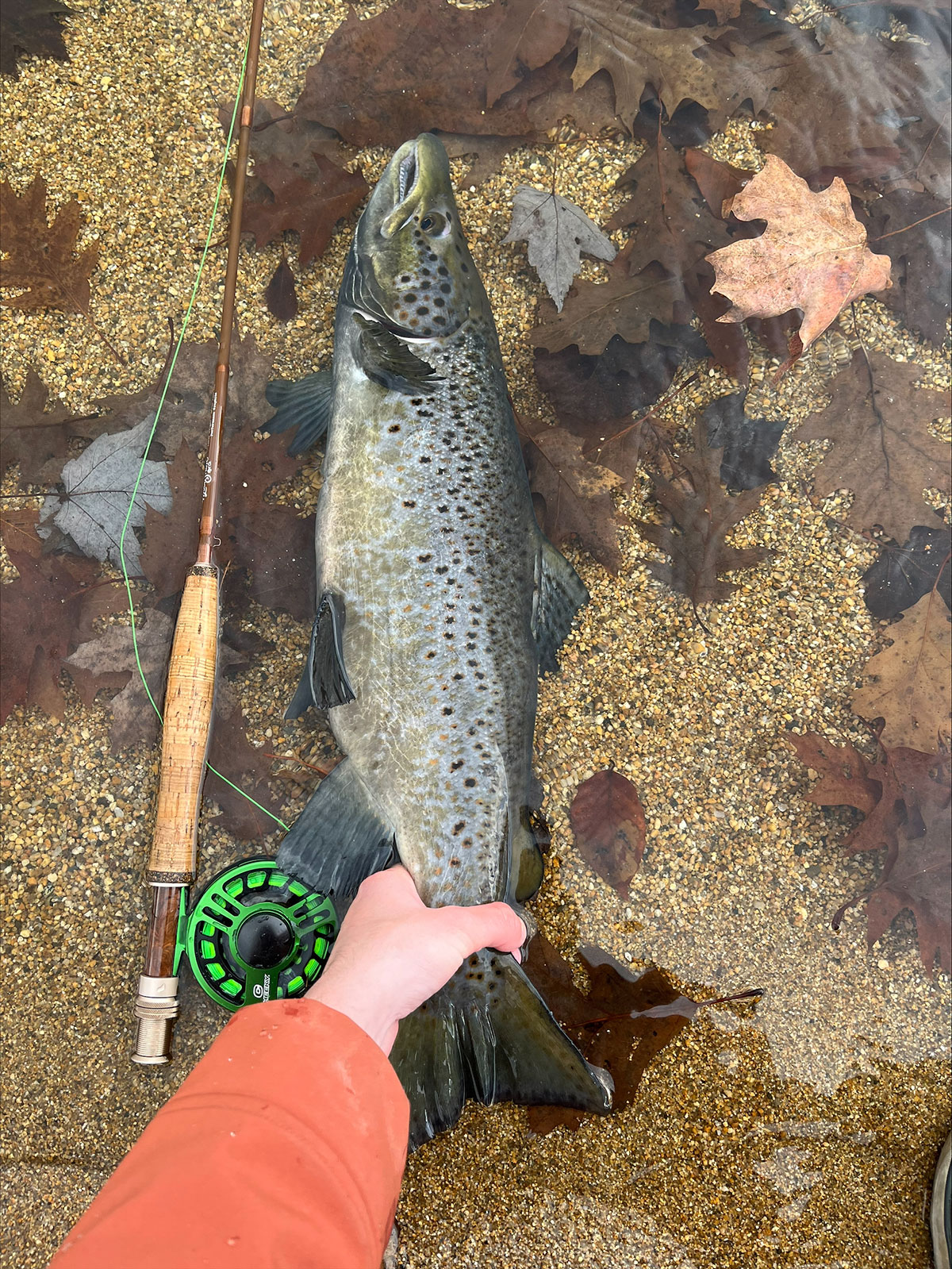
Get Them Fired Up!
Once you get the attention of a splake or lake trout you want to make them work for it, draw them to the surface and get them fired up. Then you can vertically jig them while practically sight-fishing. Usually we are targeting channels, humps, and steep drop offs, mainly looking for signs of bait in those areas. My favorite lures for these fish come from Bend It Baits, made by a local fisherman from New Hampshire. I really like his 7mm tungsten jigheads because they feature a strong hook that won’t bend out, and I’m usually pairing that with the Bend It 2-inch Pin Smelt Swimbait, or the 1-inch Gulp Minnow. These are killer baits for this style of fishing (and ice fishing), as they closely resemble the pin smelt that the splake and lake trout tend to feed on. We fish these on a medium light rod with a 2500 size reel, 10-pound braid connected to 15 feet of 8-pound fluorocarbon leader.
As with any fishery, much of the fun comes with the process of figuring things out. The satisfaction that comes with catching that first one and then learning how to get them to bite with more consistency, just makes you want to go more and more. With the unique fisheries of Maine’s deep freshwater lakes, you get all that… and you get to fish for species you just don’t find in southern New England.
